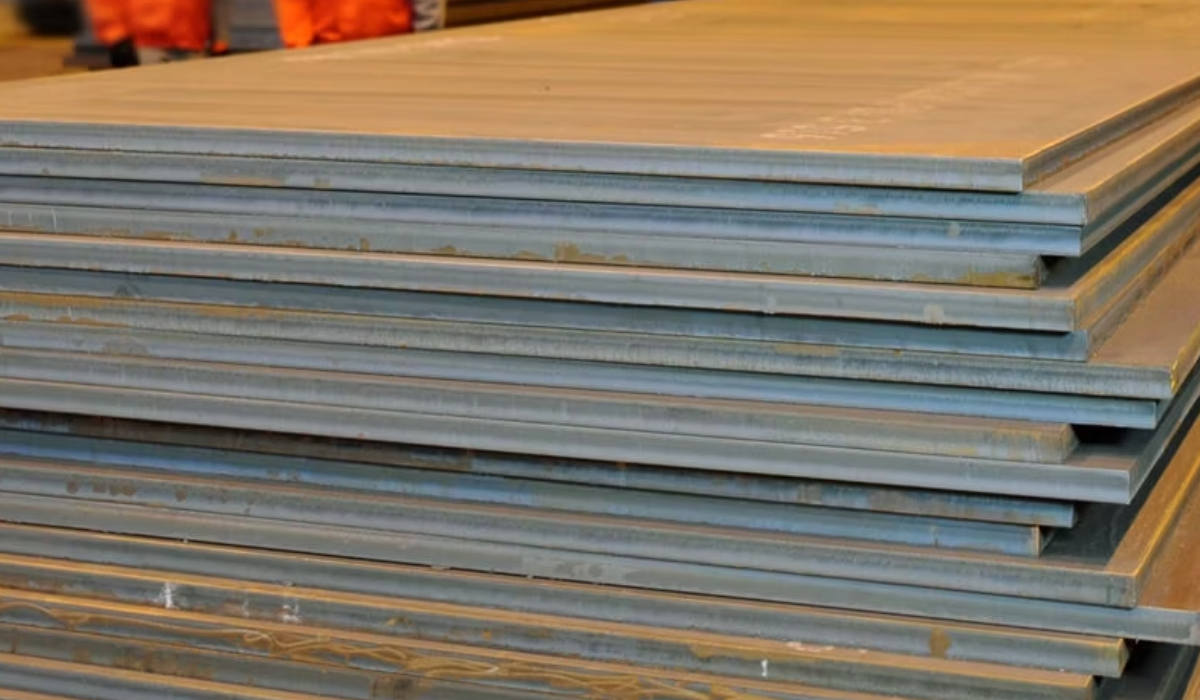
Abrasian & Wear Resistant Steel Plates
Abrasion Resistant (AR) steel plate is typically made in the as-rolled condition. These types/grades of steel plate products have been developed specifically for long service life in harsh conditions. AR products are suitable for a variety of applications in areas such as mining/quarrying, conveyors, material handling and construction, and earthmoving. esigners and plant operators choose AR plate steel when striving to extend service life of critical components, and reduce the weight of each unit put into service. The benefits of employing wear-resistant plate steel in applications involving impact and/or sliding contact with abrasive material are immense. Wear resistant steel pates is used in areas where there is likely to be a high degree of abrasion or wear of the steel plate. Steels with a high HB rating (Brinel Hardness) are intended for applications where wear or abrasion resistance is important. The benefit of using an abrasion resistant steel is that that the plant, machinery or constructions working life can be extended considerably. This can significantly improve the reliability, durability and safety of structures and Equipment.
Specifications
| Property | Details |
|---|---|
| Material | High-carbon alloy steel |
| Hardness | 200-600 Brinell Hardness (varies by grade, e.g., AR200, AR400, AR500) |
| Thickness Range | 6 mm to 100 mm |
| Width Range | 1500 mm to 3000 mm |
| Length Range | 3000 mm to 12000 mm |
| Tensile Strength | 1400-1600 MPa |
| Yield Strength | 1150-1400 MPa |
| Applications | Mining equipment, construction machinery, conveyor systems, etc. |
| Key Features | High abrasion resistance, impact toughness, and moderate weldability |
| Standards | ASTM A6, EN 10029, EN 10051 |
Manufacturing Process
The production of Carbon Steel Abrasion and Wear Resistant Steel Plates involves a meticulous manufacturing process designed to ensure durability and strength. The process begins with the selection of high-quality raw materials, followed by precision alloying to achieve optimal carbon and hardness levels. Through advanced techniques like quenching and tempering, the steel undergoes controlled heating and rapid cooling to enhance its toughness and wear resistance. The plates are then rolled and cut to the specified dimensions, maintaining strict adherence to international standards. Finally, rigorous quality checks and testing are conducted to ensure each steel plate meets the highest performance criteria for demanding applications.
Key Features and Properties of Boiler Quality Steel Plate
- Material Composition: These steel plates are crafted from high-carbon alloy steel, specially designed to deliver exceptional wear resistance and durability, ideal for the most demanding industrial applications.
- Hardness Levels: With hardness ranging from 200 to 600 Brinell depending on the grade (e.g., AR200, AR400, AR500), these plates offer unmatched resistance to abrasion and friction, making them suitable for heavy-duty usage.
- Durability and Cost Efficiency: The superior wear resistance reduces maintenance and replacement needs, translating into significant cost savings over time.
- International Standards Compliance: Manufactured to conform with globally recognized standards such as ASTM A6, EN 10029, and EN 10051, ensuring quality assurance and consistency across applications.
Applications
- Mining Industry: Used in dump truck beds, crushers, hoppers, and ore chutes for handling abrasive materials. Liner plates for mining equipment to enhance durability in highly abrasive environments.
- Construction Machinery: Essential for excavator buckets, loader arms, bulldozer blades, and other heavy-duty construction tools. Reinforcement parts in machines subjected to high stress and wear.
- Agricultural and Forestry Equipment: Utilized in tillage equipment, ploughs, and wood chipping machinery where strong resistance to wear is crucial.
- Power Plants: Incorporated into coal-handling equipment such as ash conveyors and pulverizers. Used in fan blades and other components subject to erosion in high-temperature environments.
Chemical Composition of Copper Fasteners
| Element | Content (%) | Purpose |
|---|---|---|
| Carbon (C) | 0.20 - 0.30 | Increases hardness and strength, essential for wear resistance. |
| Manganese (Mn) | 1.00 - 1.60 | Enhances toughness and hardenability. |
| Silicon (Si) | 0.20 - 0.70 | Improves strength and resistance to oxidation. |
| Chromium (Cr) | 0.40 - 1.50 | Boosts wear resistance and corrosion resistance. |
| Nickel (Ni) | 0.30 - 1.00 | Adds toughness and improves impact resistance. |
| Molybdenum (Mo) | 0.20 - 0.60 | Enhances strength and resistance to high-temperature wear. |
| Phosphorus (P) | ≤ 0.025 | Kept low to maintain ductility and toughness. |
| Sulfur (S) | ≤ 0.010 | Controlled to avoid brittleness. |
| Boron (B) | ≤ 0.003 | Improves hardenability and wear resistance. |
The actual hardness ranges for this steel relating to particular thicknesses are provided below:
| Grade | Product | Thickness (mm) | Hardness Range (HBW) |
| 400 AR | Cut Lengths | 2.5 - 6.4 | 360 - 420 |
| 400 AR | Heavy Plates | 5 - 15 | 360 - 420 |
| 400 AR | Heavy Plates | 15- 30 | 360 - 450 |
| 400 AR | Heavy Plates | 30 - 60 | 360 - 480 |
